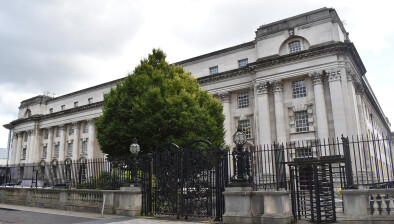UK Supreme Court finds current Scottish practice on admission of sexual conduct evidence liable to result in ECHR breaches

The UK Supreme Court has ruled that the practice of the Scottish courts since 2013 in relation to the admission of evidence in trials for sexual offences is liable to infringe defendants’ rights under Article 6 ECHR but dismissed two appeals on that basis presented to the court after finding that the appellants had on the facts both received a fair trial.
David Daly and Andrew Keir contended that they were deprived of the right to a fair trial because they were unable to lead evidence or question the complainers or other witnesses about the complainers’ credibility or previous sexual behaviour, our sister publication Scottish Legal News reports.
It was argued that the “rape shield” provisions found in sections 274 and 275 of the Criminal Procedure (Scotland) Act 1995 had been incorrectly applied since the decision in CJM v HM Advocate (2013) in respect of their application alongside the common law of evidence.
The appeal was heard by Lord Reed, Lord Hodge, Lord Hamblen, Lady Rose, and Lady Simler. Interventions in the case were made by the Law Society of Scotland, the Faculty of Advocates, and the charity Rape Crisis Scotland.
Depended on assumptions
Mr Daly, the first appellant, was convicted of the rape of one complainer when she was between 5 and 7 years old, and the sexual abuse of a second complainer between the ages of 6 and 12. At trial, he was unable to lead evidence discussing an allegation by the first complainer that he had raped her again when was 13 years old and this had led to the birth of a child, which he contended was false, because the Crown did not charge him in respect of this allegation.
Mr Daly’s defence in both charges was that the complainers had fabricated the allegations. On appeal he further contended that the decision not to charge him with the false rape allegation deprived him of a fair trial, as it resulted in evidence connected to that allegation being collateral and inadmissible.
The second appellant, Mr Keir, was convicted of sexually assaulting a complainer at his home while she was incapable of consenting and of raping her when she awoke. Initially, he was also charged with raping her in a pub toilet earlier that evening, but the trial court granted the Crown’s application to drop the additional charges after the complainer was question about CCTV footage of that evening.
Mr Keir had intended to introduce evidence of consensual activity between him and the complainer, including the events shown in that footage, but was refused permission to do so. He contended that the Crown should not have been allowed to drop the additional charges and the trial court was therefore wrong to refuse his section 275 application.
The court noted the decision of the full bench of the High Court of Justiciary in CJM v HM Advocate as the starting point for modern developments of the law, observing that the Lord Justice Clerk, then Lord Carloway, clearly considered that judges in some previous cases had been insufficiently protective of the interests of complainers. In that case, he reasoned that if evidence would be inadmissible at common law, it followed there was no need to consider the statutory provisions.
It was further observed that the soundness of the decision on CJM depended on a number of assumptions, namely that the statute was intended to supplement the common law and that the test of relevance in section 275(1)(b) was the same as the common law test. The decision of the ECtHR in Judge v UK (2009) described the statutory scheme under sections 274 and 275 as “careful and nuanced”, and allowing for the admission of prohibited evidence where it was relevant and probative.
Giving licence to the Crown
In his opinion, with which the other judges agreed, Lord Reed observed: “The approach adopted recently by the appeal court effectively treats the issues at the trial as being exhaustively defined by the charge against the accused. Anything falling outside the scope of the charge is likely to be treated as a collateral issue, with the consequence that evidence relating to it will be held to be inadmissible. If this approach is applied as narrowly as it has been, it runs the risk, as Lord Glennie pointed out in his dissenting opinion in CH v HM Advocate (2020), of giving ‘licence to the Crown to set the agenda for the trial and to narrow the libel so as to exclude the possibility of the accused giving his account of what he says really happened’.”
He added: “The approach makes no allowance for the special features of trials for sexual offences. The resulting position gives rise to the difficulty which arises in relation to sexual offences of distinguishing evidence going only to credibility from evidence which affects credibility but also has a bearing on the subject matter of the charge. More fundamentally, it gives rise to the problem that if the credibility of the complainer’s evidence is decisive of the issue, then justice to the accused requires that it should be possible in principle for him to challenge her credibility, where grounds for such a challenge exists.”
Considering whether this could impinge on defendants’ Article 6 rights, Lord Reed said: “[The Scottish] approach is liable to deprive the accused of the opportunity to put evidence before the jury which is obviously relevant, in the ordinary sense of the word, and which would, if accepted, significantly strengthen his defence. It is therefore liable to result in a violation of Article 6. 180. The position is the same in relation to evidence of character, or of non-sexual behaviour bearing on credibility. The approach adopted in CJM v HM Advocate is based on the application of a simple rule, without any scope for consideration of the interests of justice.”
Sufficient protection
On the individual appeals before the court, he concluded in Mr Daly’s case: “Essentially, the jury would be invited to decide whether the accused was guilty of another rape in addition to the ones with which he was charged. The absence of the evidence did not prevent the defence from challenging the credibility of the first complainer by cross-examination and by leading evidence. Furthermore, the credibility of the first complainer’s evidence could also be assessed, as the jury were directed, in the light of the evidence given by the second complainer that she too had suffered sexual abuse by Mr Daly when she was a child. In these circumstances, the trial process provided sufficient protection for the right of the defence to challenge effectively the evidence of the first complainer to comply with Mr Daly’s rights under article 6.”
Similarly, he said of Mr Keir’s case: “The recording of [the complainer’s] 999 call enabled the jury to assess how distressed she was after leaving the house. The police officer who responded to the call gave eye-witness evidence of her distress. Mr Keir’s counsel was able to cross-examine the complainer and the police officer. Mr Keir’s version of events, as given to the police at interview, was before the jury (apart from the references to earlier sexual activity, which were of very limited probative value). He could have given evidence himself if he had chosen to do so. In these circumstances, the trial provided sufficient protection of Mr Keir’s rights to meet the requirements of article 6.”
Having determined that the established potential for breach of Article 6 had not resulted in violations in either case, the appeals were dismissed.









